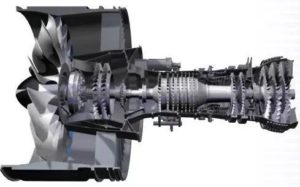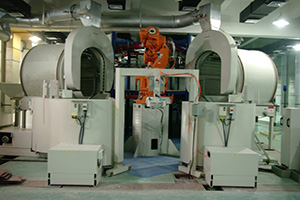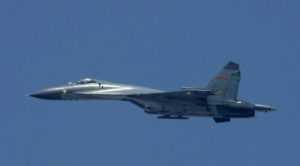Development of core technology for nickel base superalloys
(HY industry- Technical Center internal data)

-
nickel base superalloys play an important role in the field of superalloys. They are widely used to manufacture aero-engine heat-resistant parts, various industrial gas turbine Heat-end parts, nuclear power heat-resistant parts and so on.
-
Technical content and quantity involved are quite huge. From the industrial point of view, patented technology is a kind of patented technology which is based on the application in production and aims at a certain industry or a certain field. It usually forms a patented group.
-
Value and function of each patent in the patented group are different, while the core patent is the node and link in a patented group, which is the follow-up technology. The core of the industry is also the core of the industrial economy.
-
For an industry, the core patents as the center, will produce single or multi-nuclear technology groups, and then derivatives and service groups, eventually forming industrial clusters, derived from new sources of economic benefits.
-
In this paper, the DWINT World Patent Index (DII) database and DLALOG patent database are selected as the data sources. On the basis of the core patent discrimination index, the patents corresponding to the major Ni-based superalloy grades are supplemented. The patents corresponding to the major Ni-based superalloy production technology are selected. Finally 124 patents are selected as the Ni-based superalloy. Based on these core patents, the development of Ni-based superalloy core technology and the main research and application directions in recent years are discussed.
Analysis of core patent technology for Nickel-based superalloy
-
Based on the selected core patents in the field of production and processing of nickel base superalloys, the main technical contents involved in the core patents of Ni-based superalloys are determined by cluster analysis,
-
Related technologies are classified and integrated by AHP, and the main technical development and evolution process are analyzed by life cycle method. Content analysis is applied to analyze the main core technologies.
Overall development trend of core technology
-
According to the core patent data obtained, the core technology of Ni-based superalloy mainly involves three aspects: alloy preparation, alloy composition and alloy application. The upgrade of preparation technology promotes the upgrading of products and improves the performance of products. At the same time, the development of auxiliary technologies such as air-cooling, water-cooling and thermal barrier coating technology has greatly improved the high temperature resistance of alloy products.
-
Alloy preparation involves directional solidification and single crystal technology, thermal barrier coating, alloy repair technology, heat treatment technology and intermetallic compound preparation. Figure 1 is a brief description of the core technology evolution of Ni based superalloy since 1950s.
-
Through the analysis of R&D density, interannual distribution and technical life cycle of related technologies, it is known that single crystal technology mainly appeared in the 1970s, and new patented technical outputs continued until the 1990s. Since 2000, the new technology mainly involves the role of optimizing the structure parameters of crystal selector in controlling crystal orientation.
-
Technology of thermal barrier coating was produced in the early 1990s, and it is still a relatively concerned research and development direction, and is still in the growth stage; alloy repair technology because of the development of Laser Cladding Technology Since the late 1990s, laser cladding technology has been developed rapidly. At present, laser cladding technology is applied to repair some key alloy products or components. In addition, laser cladding technology is more and more used in the preparation of thermal barrier coatings.
-
Core patented technology for Nickel-based superalloys has been developing continuously since its emergence. The major technology-holders, the United States and Japan, have more R&D activities and outputs in this field. Germany, Britain, France and other countries are also major core technology owners (see table 1).
-
General Electric Corporation (GE) and United Technologies Corporation (UTC) are the main core patentees, and their core technology patents account for nearly half of the total core patents, while Siemens, Howmet, Rolls-Rayce, Japan Institute of Industrial Technology (NIET) and Japan Institute of Industrial Technology (NIET) are the other core patentees. Kelu Meirei Gas Turbine Co., Ltd. and Special Metal Co., Ltd. also have considerable technical strength .
Aalysins of the evolution of main core technologies
Preparation technology
-
The core preparation techniques of Ni-based superalloy involve calcination, casting, directional solidification, single crystal and so on (Fig. 2). In 1966, after directional solidification of crystalline form on the basis of casting, more than 10 middle product models (PWA1426, CM186LC, etc.) appeared. In the 1970s, single crystal patented technology was developed on the basis of directional solidification. In 1982, the first generation of single crystal products was produced. The more famous product is PWA1480. At present, Ni-based single crystal product technology has been developed to the sixth generation, and mature application has reached the fourth generation.
-
From the technical point of view, the inheritance of the development of preparation technology is relatively strong. Casting is developed by combining melting with mold, directional solidification is developed by combining temperature gradient with casting, and single crystal technology is developed by combining directional solidification with single crystal control technology.
-
Each landmark technological progress is in the previous generation of technology. On the basis of development. At present, directional solidification technology is the most effective way to prepare single crystal superalloy
-
With the development of computer information technology, computer plays an important role in the process control of Ni-based superalloys. For example, Rene’s 3rd generation superalloys adopt computer to carry out composition calculation, statistical screening, composition optimization and other processes in the development process.
-
In recent years, in addition to the comprehensive properties of alloy, such as high temperature resistance, corrosion resistance, oxidation resistance, creep resistance, mechanical strength and so on, the related core technologies also pay attention to the coordination between alloy and environment, reduce maintenance, extend the service life of materials, and reduce the cost of alloy preparation.

thermal barrier coatings
-
Thermal barrier coating technology is proposed by NASA Center in the United States, which coats ceramic materials with high temperature resistance and high thermal insulation on the surface of the alloy substrate. Its function is to reduce the surface temperature of the alloy, so that the alloy can work at a higher temperature.
-
In order to improve the engine’s high temperature resistance, Rollo began to test the engine cooling technology in 1960, which greatly improved the engine’s high temperature resistance. In addition to cooling technology, Rollo developed thermal barrier coating technology in the 1990s, which further improved the engine’s high temperature resistance .
-
Generally speaking, the thickness of thermal barrier coatings is 100-500 microns, which can reduce the surface temperature of alloy from 100 to 300 degrees centigrade or even higher.
-
4th generation Ni-based superalloy itself can withstand about 1180 degrees centigrade. However, in the presence of thermal barrier coatings, the turbine engine can work in the environment above 1300 degrees centigrade, thus greatly improving the efficiency and performance of the engine.
-
Thermal barrier coatings consist of an inward-outward matrix, an adhesive coating, an extended layer, and a ceramic coating (Fig. 4). The matrix is composed of Ni-Co based superalloy. The bonding coating is usually composed of NiCrAlY alloy or NiCoCrAlY alloy. The diffusion layer is the Al oxide layer grown during the preparation and working process.
-
Ceramic layer is a high temperature resistant coating. The four layers work together to improve the engine performance. Siemens’patented technology for preparing thermal barrier coatings is representative of this kind of patents, and it is consistent with the mainstream direction of increasing rare earth functional elements developed in recent years.
-
The alloy powder is treated by low oxygen heat treatment, thermal diffusion of rare earth elements, inert atmosphere heat treatment and reduction atmosphere increase in turn. Finally, plasma sprayed onto the surface of the alloy substrate to form thermal barrier coatings
Heat treatment
-
Heat treatment plays an important role in the preparation o fNickel-based superalloys. There are two main purposes: one is to strengthen the properties of the alloys; the other is directional crystallization, which can improve the microstructure, mechanical properties, ductility, gamma phase distribution, creep resistance, crystal orientation and so on.
-
General Electric Corporation of the United States has the most core heat treatment technology, its core technology includes first in vacuum or inert atmosphere treatment of alloys to achieve at least 95% of the gamma phase, and then through step-by-step control of heating and cooling time to heat treatment of alloys, heating and cooling retention time has strict requirements. .
-
By heat treatment, the high temperature resistance of the single crystal of 2H-based superalloy is greatly increased, the stress fracture strength and fatigue resistance are increased, and the oxidation resistance and hot corrosion resistance are superior. At the same time, the mechanical and environmental compatibility is also improved.
Laser cladding technology
-
Laser cladding and multi-layer cladding of high temperature alloys have been studied extensively both at home and abroad.
-
Laser cladding has the advantages of local heating and low heat input. At the same time, ultra-high temperature gradient of laser cladding is beneficial to directional solidification growth of materials. At present, laser cladding technology is mainly used in repairing substrate and NiCrAlY or NiCoCrAlY coating in the field of nickel base superalloys.
-300x200.jpg)
Other core technologies
-
Other aspects of nickel base superalloys core patented technology include high temperature welding materials, high temperature shape memory alloys, intermetallic compounds, etc
-
GE’s Ni-based high-temperature welding materials are mainly divided into high-melting composition, low-melting composition, and high-melting composition and low-melting composition, and the proportion of each component is reported in detail.
-
Biphasic intermetallics with primary and eutectoid structures and Ni-Ti shape memory alloys in high temperature environment are also the main technologies involved in the core patents in this field
Core technology and Application
-
Core patented products of nickel base superalloys include products produced by smelting, casting and single crystal technology, among which the single crystal products have a high temperature resistance between generations of 30 ~60%.
-
Second generation products began to contain a certain proportion of Re; the fourth generation products contained a certain proportion of Ru; the fifth generation products improved the oxidation resistance of alloys by adding Si, while increasing the content of Ru.
-
Ta was replaced to maintain the microstructure of gamma/gamma; the sixth generation products Ru, Re’s status of other Pt metals was upgraded.
-
According to reports, the sixth generation of Ni based single crystal superalloy technology has been developed mainly by Japanese NIMS and American GE. NIMS in Japan attaches great importance to the comprehensive performance and environmental performance of materials, Ru content is up to 5.0%, of which oxidation resistance under high temperature environment is relatively more important.
-
Reported alloy model is TMS-238. GE in the United States increased the content of other Pt metals in the alloy, reported from 0.1% to 6.0%, the specific product name has not been reported. Table 3 shows some Ni based single crystal superalloys and their applications.

epilogue
-
Through the analysis of core technology of nickel base superalloys, it can be found that the evolution of core technology and industrial development are corresponding. Tracking and grasping the direction of research and development of core technology is to grasp the direction of industrial development. In recent years, the R & D direction of nickel base superalloy core technology is mainly reflected in the following 4 aspects.
-
Application of computer information technology in alloy preparation. In recent years, the main steps taken by the core enterprises are to simulate the composition of gold, alloy preparation, alloy properties, etc. by computer, and then realize industrialization.the rapid development of assistive technology.
-
Single crystal alloys adjacent to two generations can improve the temperature resistance by 30% ~ 60%. The combination of thermal barrier coating technology and gas cooling technology can directly improve the working environment of single crystal alloys by several hundred degrees Celsius, so that superalloy products work in more harsh environment, is one of the most important research and development directions in recent years.
-
Rapid development and wide application of laser cladding technology. Laser cladding technology plays an increasingly important role in the field of preparation of thermal barrier coatings and repair of superalloys.
-
Successful applications of laser cladding include not only the preparation of thermal barrier coatings on the surface of single crystal alloys, but also the epitaxial growth and repair of single crystal alloys on the substrate materials. It is also one of the most important research directions in recent years. The future laser cladding technology in the preparation of superalloys and other related aspects of how to expand the application of more deserves attention.
-
Comprehensive performance improvement. The comprehensive properties include not only high temperature resistance, corrosion resistance, oxidation resistance, creep resistance, mechanical strength and other properties, but also more and more attention to environmental compatibility, less maintenance, extending the service life of materials, and reducing the cost of alloy preparation.


